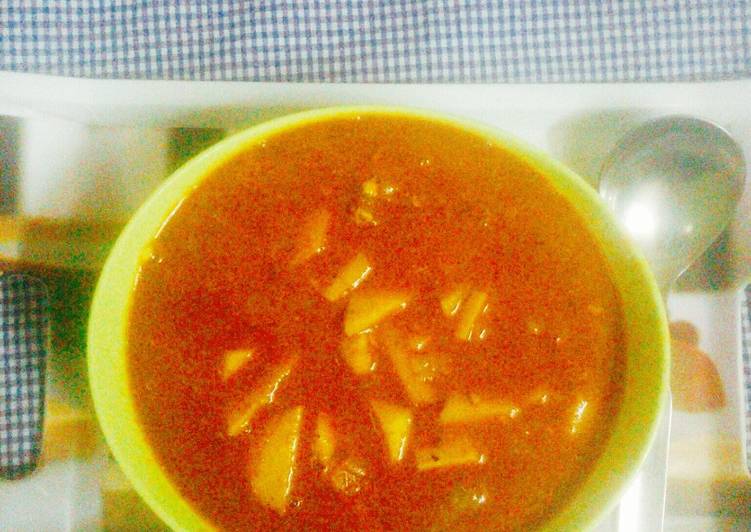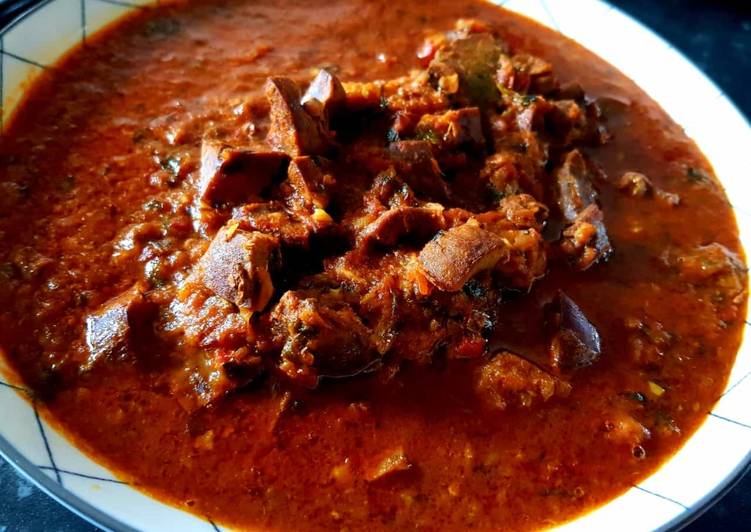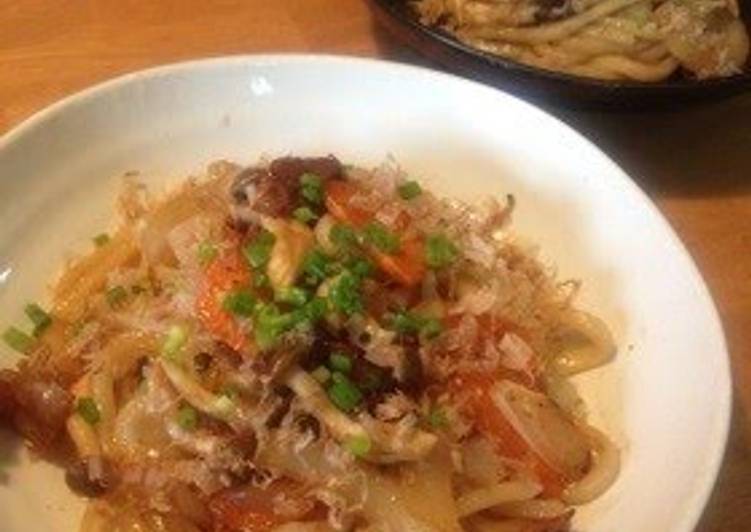
Hello everybody, it is me again, Dan, welcome to my recipe site. Today, we’re going to make a distinctive dish, taro root curry. It is one of my favorites food recipes. For mine, I will make it a bit unique. This will be really delicious.
Most of the people's favorite curry in South India.such a delicious curry.try to make this recipe. Colocassia or Taro root is an underground root vegetable which is cooked in India. Delicacies are also made of the Colocassia leaves.
Taro Root Curry is one of the most popular of current trending foods on earth. It’s simple, it is fast, it tastes delicious. It is appreciated by millions daily. They are nice and they look fantastic. Taro Root Curry is something which I have loved my whole life.
To get started with this recipe, we must first prepare a few ingredients. You can cook taro root curry using 13 ingredients and 12 steps. Here is how you can achieve it.
The ingredients needed to make Taro Root Curry:
- Get 200 gm Taro root (arbi)
- Get 2 tsp mustard seeds
- Prepare 15-16 garlic petals
- Get 4-5 whole & dried red chilli
- Prepare 1 big size tomato, chopped
- Make ready 1 tsp turmeric powder
- Get 1 tsp coriander powder
- Prepare 1/2 tsp jeera powder
- Get 1/2 tsp black pepper powder
- Get Salt as per taste
- Prepare 1/2 lemon, medium size
- Prepare 1 tsp fenugreek seeds(methi dana)
- Get Mustard oil as per requirement
Taro root comes from the taro plant, which is native to Southeast Asia and India and is a staple in In parts of India, it's often cubed and added to curries. And perhaps most commonly known in the U. Colocasia esculenta is a tropical plant grown primarily for its edible corms, a root vegetable most commonly known as taro (/ˈtɑːroʊ, ˈtæroʊ/), or kalo (see §Names and etymology for an extensive list). Taro root or colocasia is known as "seppankilangu" in Tamil.
Steps to make Taro Root Curry:
- Wash the arbi nicely with clean water.Now trasfer the arbi to a pressure cooker and add some water to it.Pressure cook for 1 whistle over high flame to boil the taro Root. Allow the pressure cooker to cool and then open the lid and take out the boiled arbi in a plate.Peel off all the boiled arbi
- Chop them into several pieces.
- Take the mustard seeds, garlic petals &whole dried red chillies in a mixer jar.Add 2 tbsp water to the jar and then grind them to form a fine paste.
- Now heat some mustard oil in a kadai &add methi seeds to it.After crackling &little colour changing then add ground paste to it.Stir &cook the paste for a few seconds.
- Now add all the powder spices and salt to it.Stir, mix and cook all the ingredients together for a few seconds
- Add the chopped tomatoes and again stir, mix and cook all the ingredients together till the tomatoes become soft and oil begins to separate.
- Now add chopped arbi or taro Root pieces. Stir and mix well.
- Then squeeze the 1/2 lemon.Mix it well.
- Now add water to kadai.
- Allow the gravy to come to a boil.
- Then cover the kadai with a lid and lower the flame to low level & cook taro Root Curry for 10 min.
- Turn off the flame after 10 min and transfer the taro Root Curry to a serving dish & serve it with chapati or paratha or rice.Enjoy this yummy taro Root Curry.
Taro root comes from the taro plant, which is native to Southeast Asia and India and is a staple in diets there as As a starchy vegetable, the taro root contains more carbs than other types of vegetables. Taro root or colocasia is known as "seppankilangu" in Tamil. Usually most South Indians make either seppankilangu roast or curry or add it to buttermilk kulambu (mor kulambu) or aviyal, but this is a very. Sister Fire's I-tal Rundown [Pumpkin and Carrots]. The Most Popular Paleo Root Vegetable.
So that’s going to wrap this up for this special food taro root curry recipe. Thank you very much for your time. I am confident that you will make this at home. There is gonna be interesting food in home recipes coming up. Remember to bookmark this page in your browser, and share it to your family, friends and colleague. Thank you for reading. Go on get cooking!

